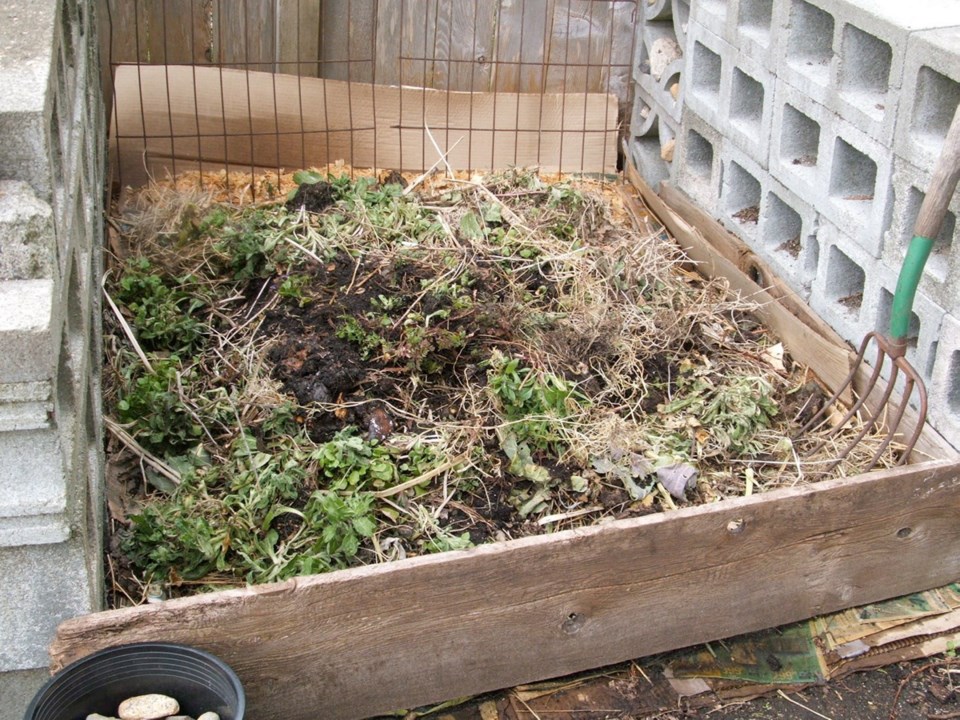Earlier in the fall, news reports were full of information on the surprising amount of food waste happening in our country. A study in one region found an average of 5 1/2 pounds of useable food was wasted per household weekly. That food represented enough calories for five adult dinners.
The monetary value of the wasted food was estimated at $18, a sum that did not include the environmental cost of the wasted food’s production and disposal.
As I listened on the radio and read about all that food being tossed out, I considered the very good fortune, and great opportunities for good, of anyone who has access to gardening space. We are well positioned to eliminate almost all waste of food and related resources. We can run our own little recycling depots. Some thoughts for consideration:
• The vegetables and fruits we grow come without packaging. If some need to be kept for a short while in the fridge, they can be stored in used containers and bags.
Current public concern over one-use plastic bags turned my attention to the accumulation of produce and other clear plastic bags in my house. I’ve always washed these bags and air-dried them for re-use within my home. Now I keep a bundle of the washed, dried and folded bags in my purse to use for fresh purchases.
With care, the bags can be used many times before being placed in the soft plastic recycling.
• Watch in kitchen stores and at farmers’ markets and craft fairs for re-useable beeswax-coated food wraps. At my local, year-round farmers’ market I met a vendor who has made closeable bags out of the same treated material. The bags would be useful for storing salad greens and other produce.
• Almost all our vegetable and fruit trimmings, home-grown or purchased, can be composted in one way or another.
When I gather vegetables for a meal, I bring them first to a table next to the garden shed for trimming. Off come the carrot tops, for example, and outer cabbage and lettuce leaves, all placed in a bucket that will be emptied onto a compost heap.
A composting area does not need to be anything at all elaborate. A free-standing heap will do. My composting enclosures are separated simply by short walls of large openwork cement bricks. Here is the heart of the garden, where almost all plant bits are processed naturally into replenishment for our garden soils.
• Preparing fruit and vegetables for cooking or eating raw involves the production of useful materials for the garden — peelings, cores, leaves, stem bits. In my kitchen they go into a stainless steel container next to the sink.
The blend of materials in the kitchen compost container almost always includes items that can attract mice, rats and raccoons if placed on an open compost heap. To avoid encouraging the creatures, I empty my kitchen compost into holes made as deep as possible around hungry plants like rhubarb and globe artichokes, and in areas needing increased moisture retention in the soil. Only once have I ever had buried materials dug up, by a determined raccoon. Firming the soil down well over the covered-in hole is helpful. If problems arise, cover the hole with a board or some chicken wire.
• We can’t compost everything, but meat and poultry bones, and soiled paper food packaging, can go to high-heat municipal composting programs via our green bins.
• Every garden presents different possibilities for further waste-reducing, recycling projects. I’ve been busy widening pathways this fall, for easier wheelbarrow access to garden plots. Many of these back garden paths also need cleaning up and re-surfacing. I use mainly scrounged materials.
I found a store in my town that always has an accumulation of cardboard they need to haul to a recycling depot. I use cardboard as the base layer for pathway weed suppression. I call by at a convenient time to them and fill the back of my vehicle with the cardboard. It’s a transaction that benefits us both.
Almost all my newspaper is recycled in the garden. It is laid thickly atop the cardboard on pathways, before I add wood shavings — some of which are also recycled from a friend of a friend with a woodwork shop. I line emptied compost enclosures in the same way before starting to refill them.



